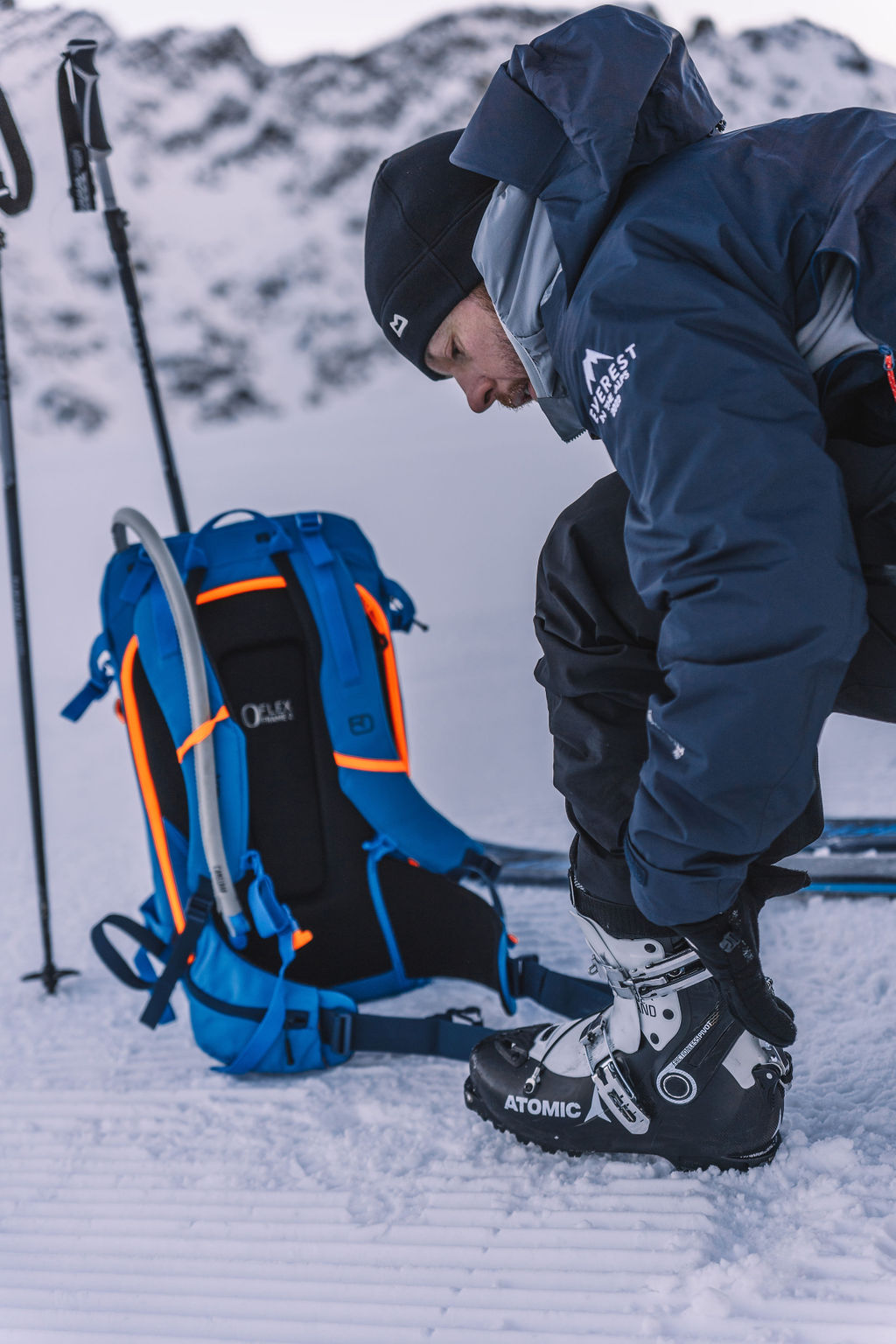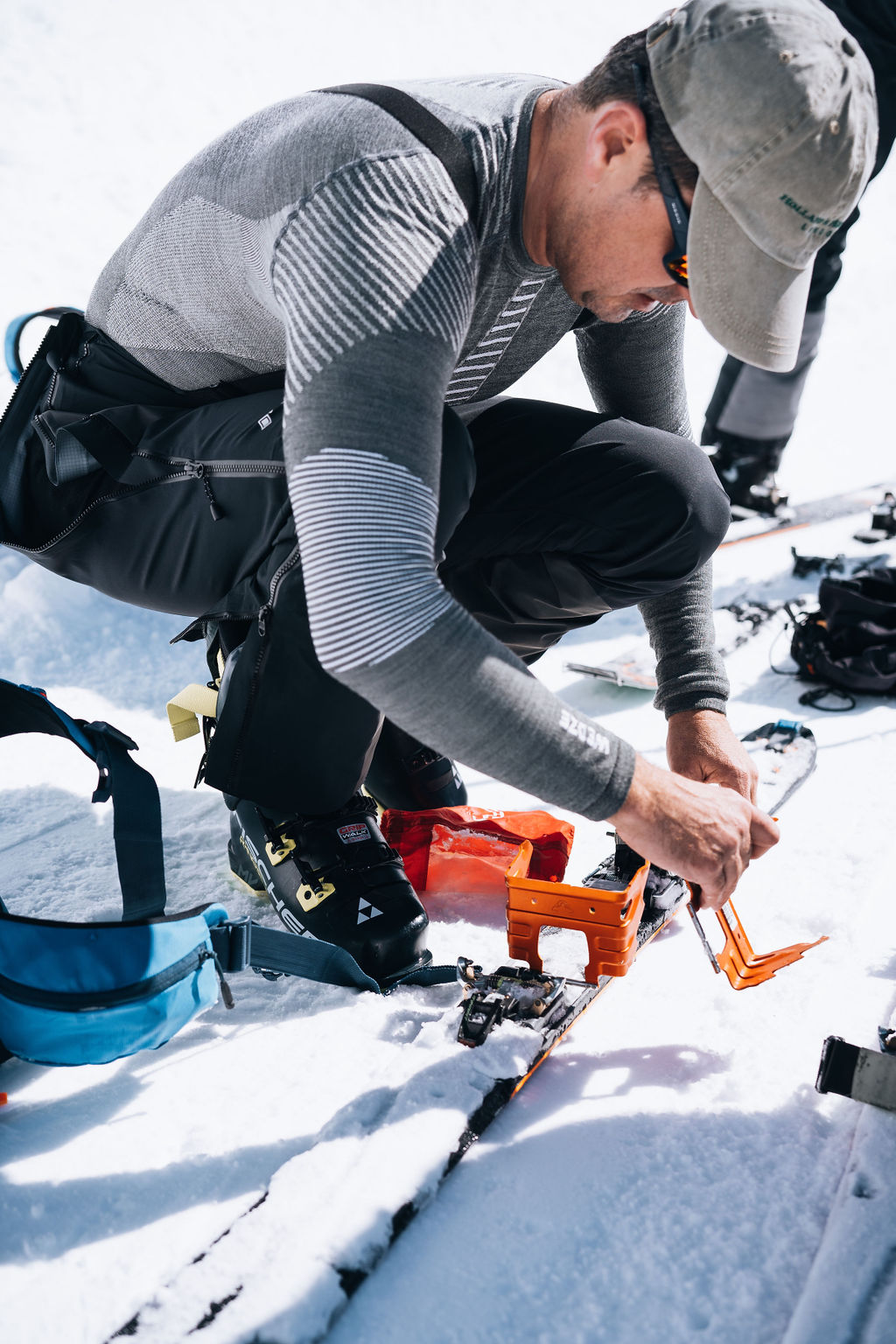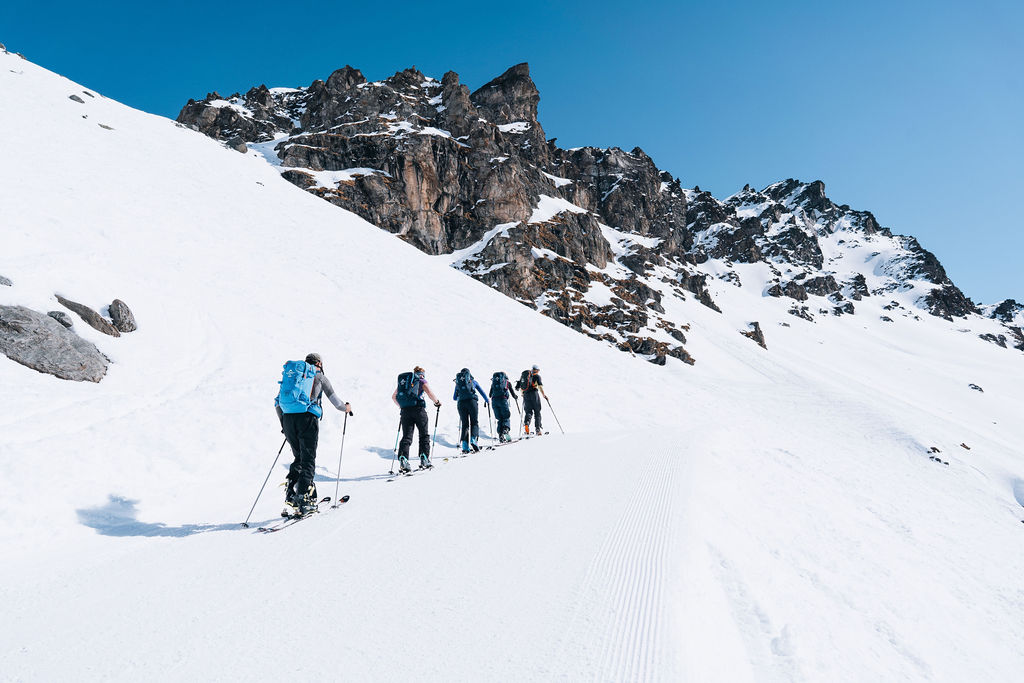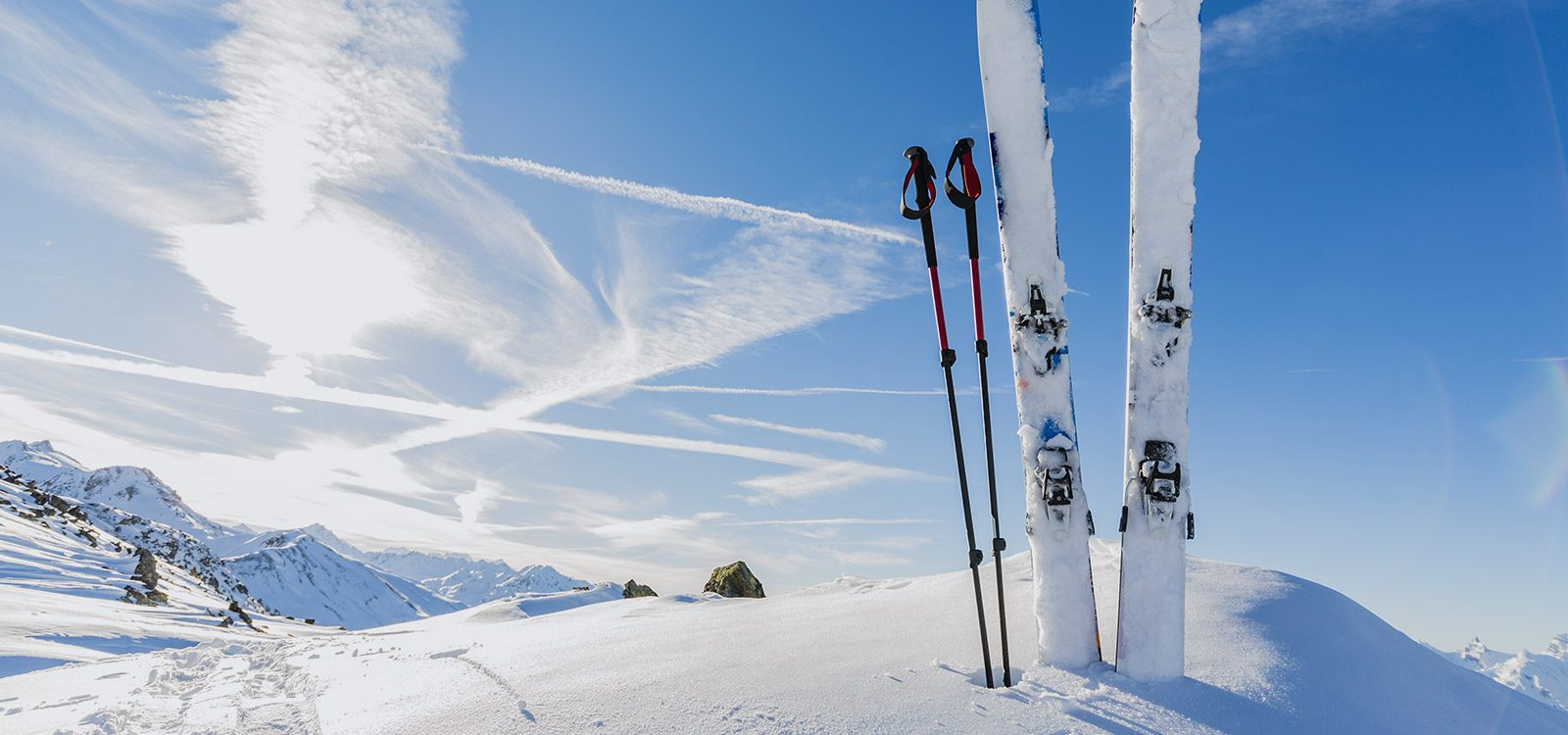The main equipment
Whether you are a seasoned ski tourer or not, the right kit is important. If you are looking to purchase, the following information will help. It is also possible for us to arrange hire of essential kit in Verbier if needed. Team members can access discounts from our affiliate partners Nordic Life for specialist kit as well as advice, and Cotswold Outdoor, which includes Snow+Rock, Cycle Surgery and Runners Need. All Everest in the Alps team members will be provided with a branded technical hardshell jacket and a rucksack.
Skis
Although it’s possible to use normal downhill skis for touring, most people now use skis designed for the sport. They are lighter and the tight carbon construction is stable enough for both the ascent and descent. But there is huge variability. On Everest in the Alps we particularly encourage the teams to use skis designed for long days of touring as there is so much more climbing to do than ‘normal.’ Keeping the weight down on this challenge is paramount. However ski touring varies and if you are aiming for a day’s back-country powder skiing or journeying between resorts encountering a range of snow conditions, you will need something different.
There are many providers and most of the leading ski brands have their own touring marques and some have different models for men and women. When choosing it’s important to consider what you want from the ski. For us, the weight is crucial and so a lightweight construction works and we are prepared to sacrifice some rigidity for the downhill. The length of the ski is also important, a shorter ski may be easier for the climb, to make kick-turns and to conserve energy. Also, specialist ski touring skis are often adapted with notches in the tip and tail to make it easy to attach the skins. On EIA these make a lot of sense given the work we put through the ski when actually skinning.
Most importantly though if you are buying skis, then we recommend buying them in the mountains and ask if you can try the brands they recommend. Most mountain rental shops now stock touring equipment and so you can get a sense of what model, weight and length works best for you before committing.
Skins
Skins stick to the bottom of your skis and provide the grip on the snow when climbing. Thanks to their design they grip one way and glide (slowly) the other. Formerly made from seal skin, they’re now made of nylon or mohair, or a hybrid of the two. Typically, if you are buying or renting ski touring skis the skins are provided, and already sized perfectly to your ski. As well as being clipped to the tip and tail of your skis, a non-permanent adhesive holds the skin in place once fitted and they can easily be attached and detached, although a bit of practise is required. One tip is that you do need to ensure your skins remain warm and dry when not in use between ascents – we always put ours deep in our rucksacks or even inside our jackets to preserve them for the next climb.


Boots
Like with any up-hill exercise the quality of your boots is paramount. The boots differ from normal ski boots in that they typically have a vibram sole for climbing stability when not in the ski, an added flex option for the ascent and they should be considerably lighter. For Everest in the Alps you ideally want a boot that weighs less than 3kg with a good flex adjustment, remembering that you’ll be ascending most of the time. Ski touring boots these days come in three broad categories: the lightest are ‘touring race boots’ with just 2 clips, next are ski mountaineering boots with 3-4 clips and finally ‘free ride boots,’ best for skiing. We like the middle category, the 3-4 clip boot that’s still light but gives good stability for the downhill, which is helpful for tired limbs. The key is to get to a good outlet, preferably with a good range, and ask the difficult questions and explain any history you have had with boots in the past. And crucially, make sure the best boot fitter in the shop is fitting yours. The fitting will make a huge difference and boots can be adjusted and moulded in many different ways once you have made your choice. Finally a word on fitted foot beds. Some people love them but in our experience they have to be very well fitted to be worthwhile – we have seen many discarded.
Bindings
Ski touring bindings allow the heel to move freely while remaining clipped at the toe. There are two options when it comes to ski touring: frame bindings and tech bindings. You need to know that your bindings fit your boots.
Frame bindings are somewhat like traditional alpine bindings with a frame that runs from the toe to the heel. They have integrated brakes and adjustable release settings, and most are compatible with both specialist touring boots and normal ski boots. However, although good for people new to ski touring in general, we advise against them for Everest in the Alps because they’re heavier and more rigid: great for downhill but not so good for ascending.
Tech bindings are a better option. You’ll need specialist tech-compatible boots, but the benefits are noticeable when you’re on the snow. Tech bindings use pins which attach directly to the toe of the boot, so instead of lifting the frame every time you raise your heel, the frame stays attached to the ski, reducing the weight and creating a much smoother, more efficient stride.
You may also wish to take ski crampons. We do. These are a useful addition to skins, giving you extra grip on the snow and more stability when you ascend on steeper or icier sections.

Poles
You can use normal ski poles, but it’s worth considering getting telescopic poles which have an adjustable height setting. On steeper ascents you want a shorter length, and likewise, on flatter terrain a longer length is better.
Clothing
In a word: layers. Like with any strenuous physical activity, your body will soon heat up and you’ll start to sweat. Having easily removable layers will mean you can maintain a regular body temperature, which will really make a difference when you’re climbing. As soon as you’re ready to ski down you’ll start to feel the cold again, so you can quickly put your layers back on. Layers also provide better insulation and allow your body to move more freely than thick, heavy clothing. Opt for merino wool for its breathable and warm properties and have a down jacket ready to put on at the top.





